|
BLESSED ALEXANDRINA’S
PHOTO-BIOGRAPHY
A
photo-biography would have to be a biography told in photographs.
But Alexandrina’s photographs are few and do not represent all the
stages of her life (of that which was visible); to those which are
of her we have added several others that may be considered related.

Alexandrina was born here, in Gresufes…
|
 |
… in this
kitchen, before the fireplace. |
|
It is not impossible that she had been baptized in the
Quinta da D. Benta’s
Chapel, that served as Parish Church during the construction
of the actual Church. |
 |
Detail of Alexandrina’s Baptism Registration

|
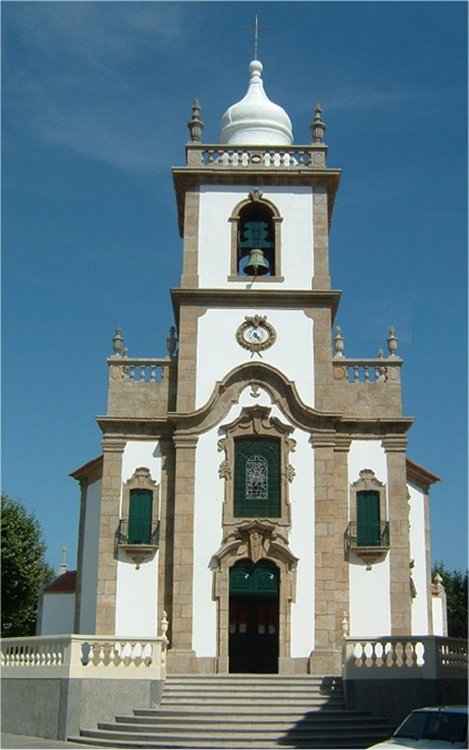
From Gresufes, Alexandrina went to Póvoa de Varzim, to
attend the primary school. She loved to frequent the Chapel
of Our Lady of Sorrows. |

She studied for a little more than one year in the School of
Mónica Cardia, on the first floor of this building, which
fronted the old Railway Station. |
|

She made her First Communion in the Matriz: it was a
remarkable day in her life. |

… and she lived in the Rua da Junqueira, somewhere near
here. |
Shortly after her return to Balasar, she began to live in the House
of the Calvary.

|
She actively
contributed to parish life, teaching catechism and singing
in the church; she also worked and helped the needy.
|
 |
|
 |
 |
|
She was 14 years old and was a beautiful young woman when,
in 1918, she had to jump through this window to elude three
ill-intentioned men who wanted to abuse her. |
Her ailment was incurable; yet she went, with great
difficulty, to Braga, to the First National Eucharistic
Congress, in 1924… |
…
but quickly the paralysis imprisoned her in her bed for the rest of
her life.

|
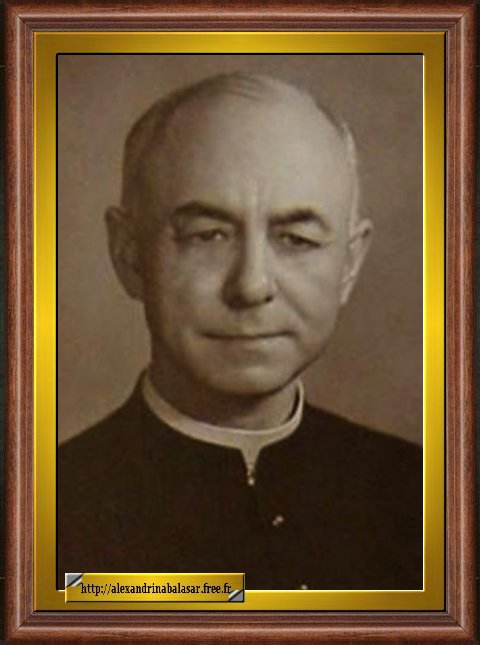
She has her first meeting with the Jesuit Father Mariano
Pinho, who becomes her spiritual director |

In 1929, the first known photograph of Alexandrina. Into a
short time she will initiate her long mystical journey. |

In the same year, she is enrolled in the Children of Mary; meanwhile
her program of life is defined: to suffer, to love, to make
reparation.
|

This photograph is dated 1935, the year when Jesus asks to
her for the Consecration of the world the Immaculate Heart
of Mary. |

In 1938, she begins to relive the Passion, as proof of the
divine origin of the Consecration’s request. |
| |
|
|
 |
 |
|
The recovery of the movements during the Passion induced Fr
Pinho to listen to the doctors. The president of the Póvoa
de Varzim’s Municipal Council, Dr Abílio Garcia de Carvalho,
was one of them. |
The Holy See and the Archbishop require clarifications for
the Consecration. After Fr Pinho, came Msgr. Vilar the
second priest who understood Alexandrina. |
| |
|
|
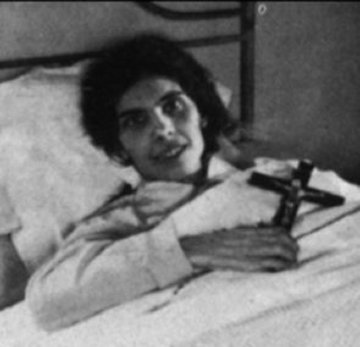 |
 |
|
We are in 1939. Negotiations with a view to the Consecration
continue, and World War II begins. |
Alexandrina in ecstasy; next to the bed, Fr Pinho took
notes. |
| |
|
|
 |
 |
|
In January 1941, Dr Azevedo comes to Balasar; until the end
of the Alexandrina’s life he will be her zealous doctor.
|
In July, she goes for the fourth time to Oporto, for
examinations. In Trofa, in Mr. Sampaio’s house, she some
memorable photographs like this one are taken of her. |
| |
|
|
 |
 |
|
In August, Fr J. Terças, of the Missionaries of the Holy
Spirit, publishes the story of an experience of the Passion
relived by Alexandrina; although the precautions taken, the
fact becomes public, with the biggest Alexandrina’s disgust.
|
In 31 October 1942, in the Jubilee of the Appearances of
Fatima, Pius XI proclaims in Rome the Consecration of the
World to the Immaculate Heart of Mary. |
| |
|
|
 |
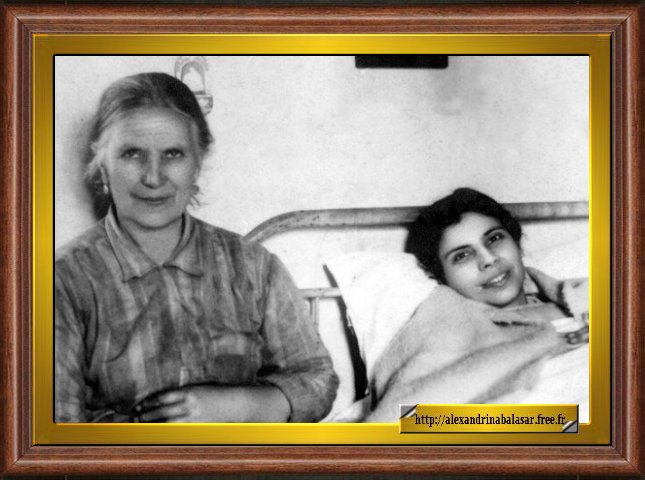 |
|
In March 1942, she began the absolute fast: she lives only
on daily Communion. The fast was medically verified in 1943,
in the
Refúgio da Paralisia Infantil. |
Senhora Ana and Alexandrina, in one of her best photographs
(1943). |
| |
|
|
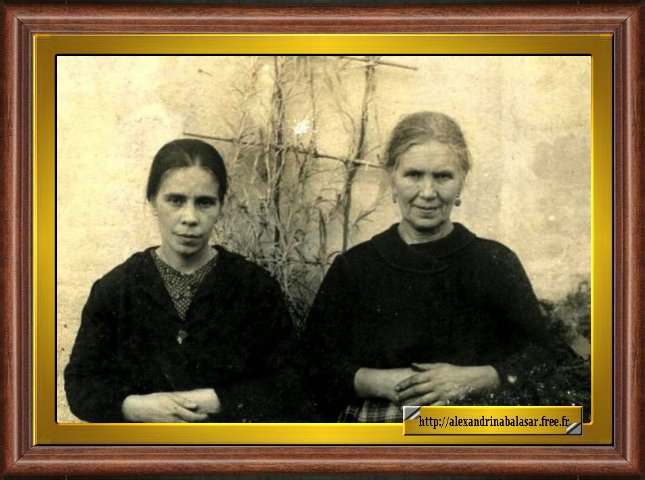 |
 |
|
Deolinda and Senhora Ana |
In June 1944, Fr Humberto Pasquale visits Alexandrina for
the first time; he will become her second spiritual
director. |
| |
|
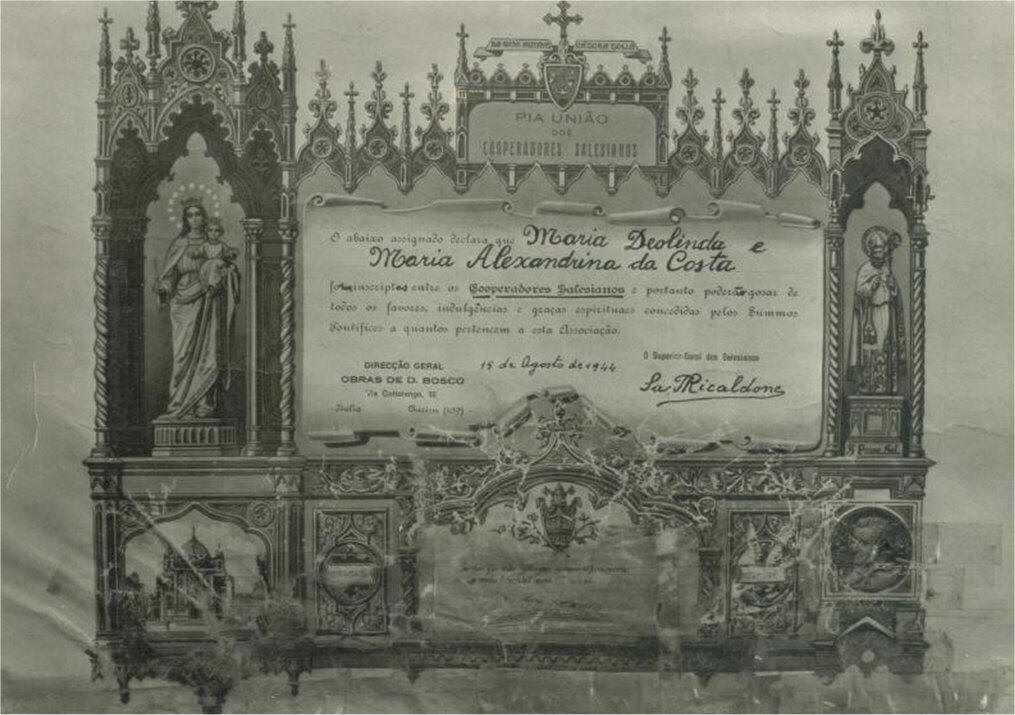 |
|
In August, he inscribes her among the Salesian Cooperators.
|
|
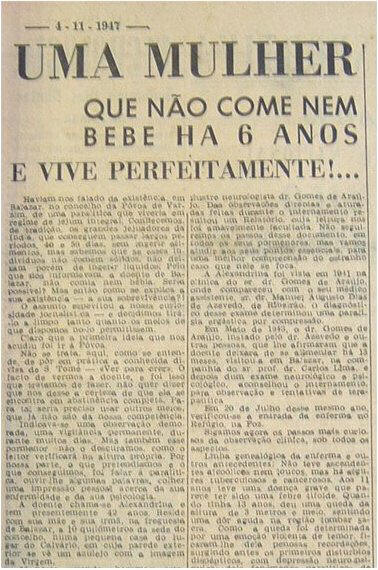 |
 |
|
Alexandrina ceased to be an unknown: in 1947 the director of
the periodical Jornal de Notícias (of Oporto) comes
to interview her and publishes an article on her case. |
Dr Azevedo intervenes in periodicals to defend the good name
of his patient, as in this article of the Diário do Norte
in 30th June 1953. |
| |
|
 |
|
On holy days, many thousands of people came to see and to
hear Alexandrina. She, in spite of having fasted for ten
years, speaks to them for many hours. |
|
 |
 |
| |
|
|
Alexandrina left many writings, almost always dictated,
because it was impossible to write them herself; but this
little letter is in her own hand. |
The Archbishop thinks about examining her again; for this he
nominates a commission presided over by the Abbot of
Singeverga and it would include a Spanish Professor. |
| |
|
|
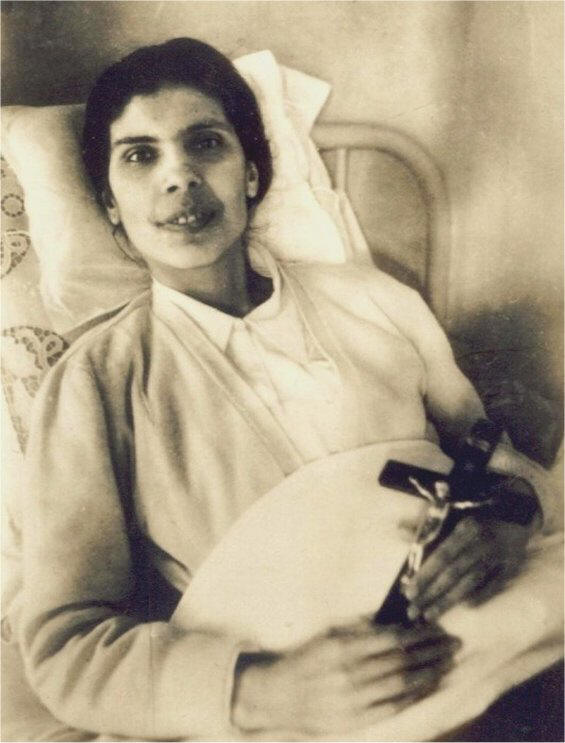 |
 |
|
The hour of departure was coming close and on 13th
October 1955, she who was declared “light and lighthouse of
the world”, goes to sing with the Angels and the Saints the
glory of the Blessed Trinity. |
| |
|
 |
|
In day 25th April 2004, Pope John Paul II, in St
Peter’s Square, declared her Beata. Alexandrina’s friends
wait anxiously for the day when she will be canonized. |
| |
|
|
 |
|
Detail of the scarf that identified Alexandrina’s friends on
the Beatification’s day. |
| |
|

![]()